Andregric/iStock/GettyImages
Your pantry is filled with foods that don't require refrigeration, but are still perishable to some degree. For example, almonds and other nuts can keep their flavor and texture for months under ideal conditions, but eventually they will begin to go bad. You can extend their shelf life by providing the best possible storage conditions, or though refrigeration.
Almond Basics
Almonds are close relatives of plums, apricots and peaches, and like its cousins it produces fleshy fruit with a large, stony pit. That pit is the almond nut, the world's most widely grown tree nut. Almonds grown for eating are sometimes referred to as "sweet" almonds, to differentiate them from the bitter -- and toxic -- variety that flavors almond extract and marzipan. Like other nuts, almonds have high levels of unsaturated oils, which oxidize and become rancid after a few months' storage. However, almonds are also high in vitamin E, a natural antioxidant, so they have better shelf life than many other nuts.
Shelf Life Guidelines
Research carried out over a span of years by major almond producer Blue Diamond showed that the nuts' shelf life varied noticeably from year to year, depending on growing conditions and similar factors. In broad terms, fresh almonds retain their best flavor and texture for two to four months when stored at room temperature in the pantry, with nuts in the shell lasting longer than shelled nuts. They can remain enjoyable for as long as a year under ideal circumstances. Packaged, flavored snack almonds remain tasty for months past their conservative freshness date, but should be eaten within a week or two once the package is opened.
Factors Affecting Shelf Life
Like any nuts, almonds should be stored in a cool, dark, dry place. High temperatures, humidity and direct light will all speed the oxidation process. Nuts with skin last longer than blanched almonds, because the skin provides a degree of protection against oxidation. Because they expose less surface area to the atmosphere, whole nuts last longer than sliced or slivered almonds. Refrigerating almonds slows the oxidizing process and extends their life to a year in the shell, or roughly nine months if shelled. They can be kept for up to two years in the freezer. Packaged snack almonds are usually treated or packaged with antioxidants to extend shelf life.
Stale vs. Rancid Almonds
Depending how quickly you eat them, it's quite possible to find yourself with almonds that have passed their prime, but haven't yet developed any rancid or "off" flavors from oxidation. To restore flavor and crisp, delicate texture, spread the nuts in a single layer on a baking sheet and toast them gently at 275 degrees Fahrenheit for 10 to 15 minutes, or until they lose their stale flavor. Cool the nuts completely before returning them to airtight packaging for storage.
Related Articles

How to Keep Almonds Fresh

How to Make Sugared Almonds

How to Store Raw Peanuts
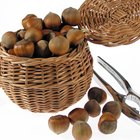
How to Eat Hazelnuts

How to Keep Macadamia Nuts Fresh
Do Dry Roasted Pistachios Need to Be ...

Types Of Almonds
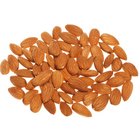
How to Cook Raw Almonds

Why Do Cashews Cost More Than Peanuts?
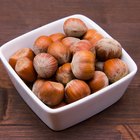
How to Dry-Roast Hazelnuts
How to Blanch Walnuts

The Shelf Life of Almond Paste
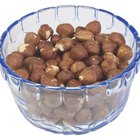
What Kinds of Nuts Don't Grow on Trees?
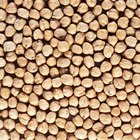
How to Know When Sprouted Garbanzo ...

Good Substitute for Cashews in Raw ...

Differences Between Roasted & Raw Nut ...
How to Toast Pistachios
How to Salt and Dry Pistachios

The Meaning of a White Orchid

How to Grind Almonds for Baking
References
- On Food and Cooking: The Science and Lore of the Kitchen; Harold McGee
- Blue Diamond Almonds: Food Safety
Resources
Writer Bio
Fred Decker is a trained chef and prolific freelance writer. In previous careers, he sold insurance and mutual funds, and was a longtime retailer. He was educated at Memorial University of Newfoundland and the Northern Alberta Institute of Technology. His articles have appeared on numerous home and garden sites including GoneOutdoors, TheNest and eHow.